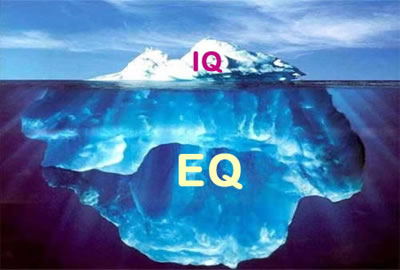Recently, I have been giving a lot of thought to gamification. Part of my core belief is that, as leaders, one of our key obligations is to provide opportunities for others  and to encourage participation.
and to encourage participation.
Consider the combination of opportunity and participation. An average performer, when presented with meaningful opportunities, generally chooses to participate. I say average performer, because, above average performers generally exhibit a work style that naturally includes participation.
How do we push increased participation? One way is to consider gamification.
What is gamification? Gamification is (paraphrasing from Wikipedia) the use of game strategies, game thinking and game mechanics in a non-game context, such as your workplace, in order to engage employees, increase participation and solve problems. Gamification is used with employee programs, for process improvement, to improve employee engagement, ROI, data quality, timeliness, and learning.
Gamification techniques leverage people's natural desires for competition, achievement, status, self-expression, altruism, and closure. A core strategy for gamifying is to provide rewards for players for accomplishing desired tasks. Types of rewards include points, achievement badges or levels, the filling of a progress bar, and providing the user with virtual currency.
Competition is another element of games that can be used in gamification. Making the rewards for accomplishing tasks visible to other players or providing leader boards are ways of encouraging competition, to drive participation.
Another approach to gamification is to make existing tasks feel more like games. Some techniques used in this approach include adding meaningful choice, easing introductions with a tutorial, increasing challenges gradually over time, and adding narrative.
How does this help us with our company programs and employee participation goals?
Let’s look at three employee-based programs. We find these programs in many companies across many industry verticals. Programs for employee recognition, employee referrals, and suggestion programs can all benefit from gamification.
There are five steps we can follow to evaluate and then recommend gamification.
1. Assessment. Look at employee or other programs and assess if they are eligible for gamification. Using the three examples shown above, answer some simple questions. Do you want to reward a few “winners” each month or each year? Do you want to encourage lots of employees to participate? For recognition, referral and suggestion programs, having more (rather than fewer) employees participate will result in better program outcomes.
For example, a traditional employee of the month program recognizes and rewards one employee each month. If you have a small group of employees, this type of program becomes an “it’s my turn” program. If you have lots of employees, then formal recognition of 12 people each year may result in leaving out hundreds or thousands of others. Typical programs traditionally leave out 85% or the employee population.
As you do your assessment, consider what you are really trying to achieve. Most likely you are going after broad engagement in the purpose and mission of your company, and the intent of the employee of the month program is to recognize and reward certain desired behaviors.
This sounds like a good program for gamification. You can greatly increase what it means for all your employees.
 2. Gamification elements. Will gamification elements work nicely with your programs? Consider these typical elements: multiple small recognitions for participation, such as earning points. The earning of points for participating brings in a much larger percentage of your employee base. Other gamification elements to consider are leader boards, achievement levels or badges, accumulable and redeemable points, and narratives and stories. Other elements can also be considered, such as choice. This means a participating employee can choose instant gratification for a certain level of participation or can defer their gratification for longer term and more valuable benefits.
2. Gamification elements. Will gamification elements work nicely with your programs? Consider these typical elements: multiple small recognitions for participation, such as earning points. The earning of points for participating brings in a much larger percentage of your employee base. Other gamification elements to consider are leader boards, achievement levels or badges, accumulable and redeemable points, and narratives and stories. Other elements can also be considered, such as choice. This means a participating employee can choose instant gratification for a certain level of participation or can defer their gratification for longer term and more valuable benefits.
For example, the employee referral program is a good candidate for some of these elements. Hiring employees is based on two key, intersecting criteria: volume of referrals and quality/appropriateness of candidates. Gamification elements can easily be established to recognize or reward for the types of referrals that are most important to you.
3. Ease of Communication. Communication efforts must focus on two areas: first, the purpose of the program and why it is important for the business and your customers; second, how the program works and what the employee’s participation options are. These communication plans must also include information about how updates, outcomes and results will be shared.
For example, many times suggestion programs require that employee suggestions are evaluated as to usefulness or ability to implements. This can take time. Making sure your program’s communication plan lets participants know about current and future results, about status changes and updates is critical. Suggestion programs are excellent candidates for gamification. A gamification element we see annually with charity campaigns is the progress bar — showing how many dollars pledged and compared to a goal. Suggestion programs can benefit from this element; consider showing the number of suggestions, employees with the highest number of suggestions (a form of leader board), overall savings and overall dollars shared back with employees.
The three example programs, recognition, referral and suggestion, all can benefit from the use of narratives and stories. These are powerful ways to feature participating employees, groups of employees, results, outcomes and keep the program alive.
4. Energizing the program. Generate energy and interest by bringing in employee based work groups. Employees from younger generations will quickly understand the gamification elements. In fact, they may have many other ideas not covered in this article. Also, including employees is an excellent way to get buy-in when deploying and starting a program. A gamification element to consider when introducing a new program (or an old program that has been thoroughly updated) is some form of free bonus points for registering as a participant. Use a dedicated web site. This allows employees to have some form of control over their participation. An absolute must: eliminate the use of forms, which in turn require transmittal to various parts of the company. Forms get lost. Forms are difficult to report on — data needs to be manually entered. A dedicated web site is so simple to build and deploy. With today’s technology, there is no reason not to.
5. Keeping it alive. Maintenance of your programs is critical to their long-term success. That means, in order for your programs to stay alive, they need to change. Use gamification ideas to set challenges, some of which may be short-term, seasonal, or linked to other things that are important or natural to your business or market. Extend the employee groups, which were involved in establishing the program, and form them into a steering or advisory committee. This does not have to be a burden for employees. A quarterly meeting to brainstorm ideas, to share talking points to share back with their co-workers — working with the team, you can easily define a meaningful agenda.
Employee referral programs are great candidates for challenge or seasonal adjustments. As the relationship between candidates and job demands change, setting and communicating seasonal challenges is a great way to leverage gamification elements.
These five steps are a great way to start looking at gamification elements to update and improve the relevancy of your important programs.
Latest posts by Philip Espinosa (see all)
- Turn Engagement Upside Down - April 23, 2024
- New Tires and Fear of Change - April 14, 2024
- Functional HR vs Organizational HR - February 18, 2024












